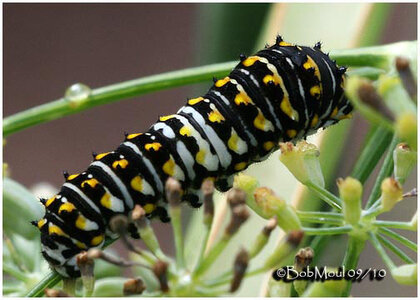Lullabelle
Midlands, England
This morning my husband did some weeding in the front garden and I mowed the back lawns, we wanted to do what we could before it got too hot.
I have no idea what that white stuff is on this caterpillar.
View attachment 31195
ETA: the internet tells me that's a tomato hornworm, and those white things are wasp larvae, and when they hatch, they'll dispose of the hornworm for me, then go out and find other hornworms to kill.
Isn't Nature cute in how deadly it is?
The gardener was in today cutting the long grass in the back field. He noticed the 8 lengths of ¾" water pipe and ½" electric conduit. "I'll do that for you", he says. "We have already organised the sparks - how much to dig the trench, today, and install the pipe later after the sparks and backfill the trench?" "฿ 500.00" he says (about £13.00).
I've prepared a contingency valve operating procedure for the alternative water supplies. I think my wife understands it.
I originally figured the caterpillar just had its curlers in. Had to look good for the garden party later.What you have here is the larvae of the Braconid wasp which is a GOOD thing!

Is it up and running now?
Yes.
But the day that it was completed, we had government water reinstated and it hasn't stopped raining since. Not the torrential downpours that we need but every little helps.
Thunder and lightning at the moment. Very, very frightening.
Went to get some parsley and found these two critters had the same idea:
View attachment 31452 View attachment 31453

I just noticed that the top pic, just to the right of the black caterpillar is an even smaller little buddy.
Yep, and we have a lot of those butterflies about. I can't figure out what the black caterpillar is.The bottom image looks to be a black swallowtail caterpillar - it should become something like this....
View attachment 31468

Thanks! We do have a ton of those black swallowtail butterflies.I think they are both types of black swallowtail - here is one image I found
View attachment 31473
https://www.butterfliesandmoths.org/species/Papilio-polyxenes
